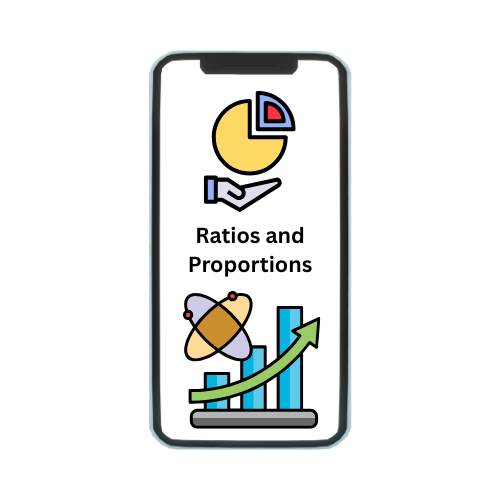The Cup and Handle is a bullish continuation pattern in technical analysis that suggests a potential upward movement in asset prices. Formed over time, the pattern resembles the shape of a teacup, where the “cup” is a rounded bottom, indicating a gradual recovery after a downtrend.
Following the cup, a smaller dip called the “handle” occurs, representing a brief consolidation before the price rallies upward. Traders see this pattern as a signal of buying pressure gaining strength and often enter long positions during the breakout above the handle’s resistance, anticipating further price gains and momentum.
What Is a Cup and Handle Pattern?
- The Cup and Handle Pattern is a bullish continuation pattern that typically forms during a price consolidation period. It is characterized by a cup-like shape followed by a minor consolidation, forming a handle. The cup represents a temporary price decline, followed by a gradual recovery. The handle signifies a brief pullback before the price continues its upward trajectory.
- Traders often visualize the pattern as a teacup with a handle, hence the name. The pattern is most observed in stocks but can also appear in other financial instruments such as commodities, currencies, and indices. It is essential to note that the cup and handle pattern is most reliable when it appears on longer-term charts, such as daily or weekly timeframes.
What does a Cup and Handle Pattern tell you?
It provides traders with valuable information about the underlying market sentiment and potential future price movements. Here’s what you can learn from this pattern:
- Bullish Continuation:The cup and handle pattern is a bullish continuation pattern, suggesting that the uptrend is likely to resume after the pattern formation completes. This can present an excellent opportunity for traders to enter long positions.
- Market Strength:The pattern reflects a temporary consolidation period, indicating that the market is taking a breather before continuing its upward momentum. This showcases the underlying strength of the market.
- Price Targets:By measuring the depth of the cup from the bottom to the rim and adding it to the breakout point, traders can estimate a potential price target for the subsequent uptrend.
How To Trade the Cup and Handle
Trading the cup and handle pattern requires careful observation and a well-defined strategy. Here’s a step-by-step guide on how to effectively trade this pattern:
- Identify the Cup Formation:Identify a cup formation on the price chart. Look for a rounded bottom that resembles a “U” shape. The bottom of the cup should have a smooth and gradual decline, indicating a temporary price correction.
- Confirm the Handle Formation:Watch for the handle formation once the cup formation is identified. The handle ought to show a minor downward consolidation, forming a slight decline and then a consolidation range.
- Entry Point: Place the trade when the price rises above the handle-created resistance level. This breakout confirms the pattern and indicates the resumption of the uptrend.
- Stop Loss and Take Profit:Set a stop-loss order below the handle’s support level to limit potential losses. Determine a take-profit level by measuring the depth of the cup and adding it to the breakout point.
- Volume Confirmation:Keep an eye on volume during the breakout. Higher trading volume should accompany the breakout, indicating strong buying interest and validating the pattern’s reliability.
- Monitor Price Action:Continuously monitor the price action after entering the trade. Consider trailing your stop loss to protect profits and adjust your take-profit target if necessary.
Example Trading the Cup and Handle in the Indian Context
- Suppose we are analyzing the stock of ABC Ltd., a prominent company listed on the National Stock Exchange (NSE). On the daily chart, we identify a cup and handle pattern that has formed from June to August. The cup represents a gradual decline, followed by a handle consolidation in September.
- Now, we need to determine the entry, stop-loss, and take-profit levels for the trade. Suppose the breakout occurs at INR 300 per share, signalling a potential bullish continuation. Traders who recognize this pattern would enter a long position above this breakout level.
- To manage risk, a prudent trader may set a stop-loss order below the handle’s support level, for example, at INR 280 per share. This ensures that if the price reverses, the trader will exit the trade to limit potential losses.
- To establish a take-profit target, we can measure the depth of the cup, let’s say INR 50, and add it to the breakout point, resulting in a target price of INR 350 per share. This indicates the potential upside for the stock.
- It’s important to continuously monitor the price action after entering the trade. If the stock price reaches the take-profit target, the trader can consider closing the position to lock in profits. Alternatively, if the price drops and hits the stop-loss level, the trader would exit the trade with a limited loss.
- Traders should always remember to consider market conditions, conduct additional analysis, and use appropriate risk management techniques when trading the cup and handle pattern in the Indian stock market. The pattern serves as a valuable tool, but it should be used alongside comprehensive technical analysis and market insights.
Advantages Of the Cup and Handle Pattern
The cup and handle pattern offers several advantages to traders who incorporate it into their technical analysis toolkit. Here are some key benefits:
- Clear Entry and Exit Points:The pattern provides well-defined entry and exit points, allowing traders to plan their trades precisely.
- Enhanced Risk-Reward Ratio:By placing the stop loss below the handle’s support level and setting a take-profit target based on the cup’s depth, traders can achieve a favourable risk-reward ratio.
- Confirmation with Volume:The pattern’s reliability can be reinforced by confirming the breakout with higher-than-average trading volume, adding a layer of confidence to the trade.
- Applicable in Multiple Timeframes:The cup and handle pattern can be observed in various timeframes, providing traders with opportunities for short-term and long-term trading strategies.
Limitations Of the Cup And Handle Pattern
While the cup and handle pattern is a powerful tool, it has limitations. Traders should be aware of the following considerations:
- False Signals:Like any technical pattern, false signals can occur. It is essential to use additional indicators or confirmatory signals to validate the pattern before entering a trade.
- Market Conditions:The pattern’s effectiveness may vary depending on prevailing market conditions. Considering the overall market trend, volatility, and other supporting factors is crucial before making trading decisions.
- Timeframe Selection:The cup and handle pattern are most reliable on longer-term charts. It may have reduced effectiveness or become less significant on shorter timeframes, such as intraday charts.
List of Important Points in Cup and Handle Pattern
To summarize, here is a list of essential points to consider when analyzing and trading the cup and handle pattern:
- It is a bullish continuation pattern.
- It represents a brief decline and a gradual recovery.
- The handle is a small consolidation before the price continues its upward momentum.
- The pattern provides insights into market sentiment and potential price targets.
- Trading the pattern requires identifying the cup and handle formations, entering at the breakout, and setting appropriate stop-loss and take-profit levels.
- Confirm the pattern with volume and consider additional indicators for validation.
- The pattern offers straightforward entry and exit points, enhanced risk-reward ratios, and applicability in various timeframes.
- However, traders should be aware of false signals and consider market conditions and timeframe selection.
Cup And Handle Pattern Example
- Suppose we analyze the stock of XYZ Ltd. on the daily chart. From January to March, the stock price gradually declines, forming the “cup” portion of the pattern. This decline is followed by consolidation, which forms the “handle” of the pattern and occurs during April and May.
- Once the handle formation is complete, traders will watch for a breakout above the resistance level formed by the handle. If the stock price breaks above this level, it confirms the cup and handle pattern and suggests a potential bullish continuation.
- For instance, let’s assume the breakout occurs at INR 200 per share. Traders who recognize the pattern would consider entering long positions at this point, anticipating further upward movement. They would set a stop-loss order below the handle’s support level to manage risk at INR 190 per share. Additionally, they may determine a take-profit level by measuring the depth of the cup, say INR 30, and adding it to the breakout point, resulting in a target of INR 230 per share.
- By carefully monitoring the price action and adjusting stop-loss and take-profit levels accordingly, traders can optimize their trading strategy based on the cup and handle pattern in the Indian stock market.
- Remember, validating the pattern with other indicators and market conditions is crucial before making trading decisions. The cup and handle patterns are a powerful tool, but it should be used with comprehensive technical analysis and risk management principles.
Conclusion
The cup and handle pattern are a valuable tool in technical analysis, providing traders with a reliable way to identify bullish continuation opportunities. By understanding the pattern’s formation, confirmation techniques, and trade management strategies, traders can enhance their decision-making process and improve their trading results. Remember to validate the pattern with supporting factors and adapt your approach based on market conditions. Incorporate the cup and handle pattern into your trading arsenal and take advantage of its potential to uncover profitable trading opportunities.





